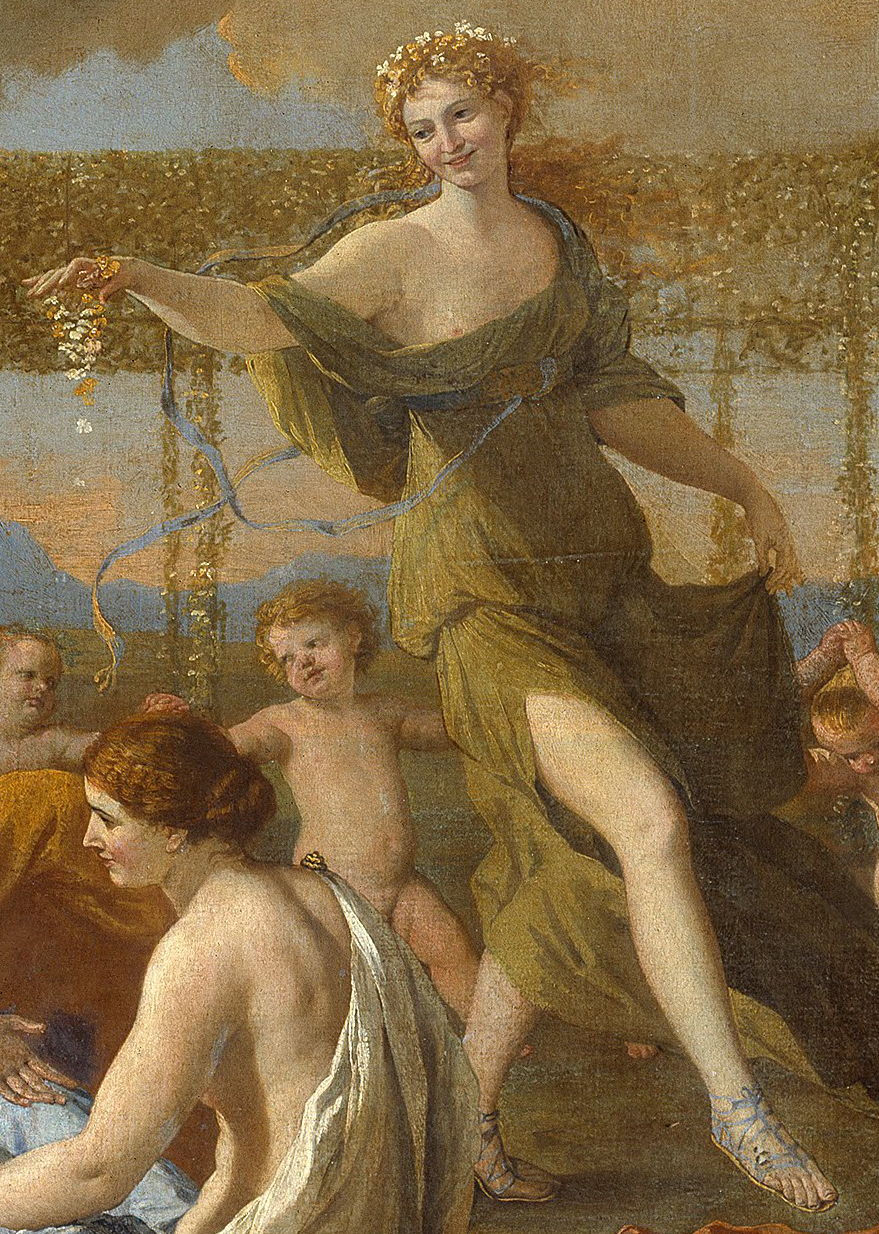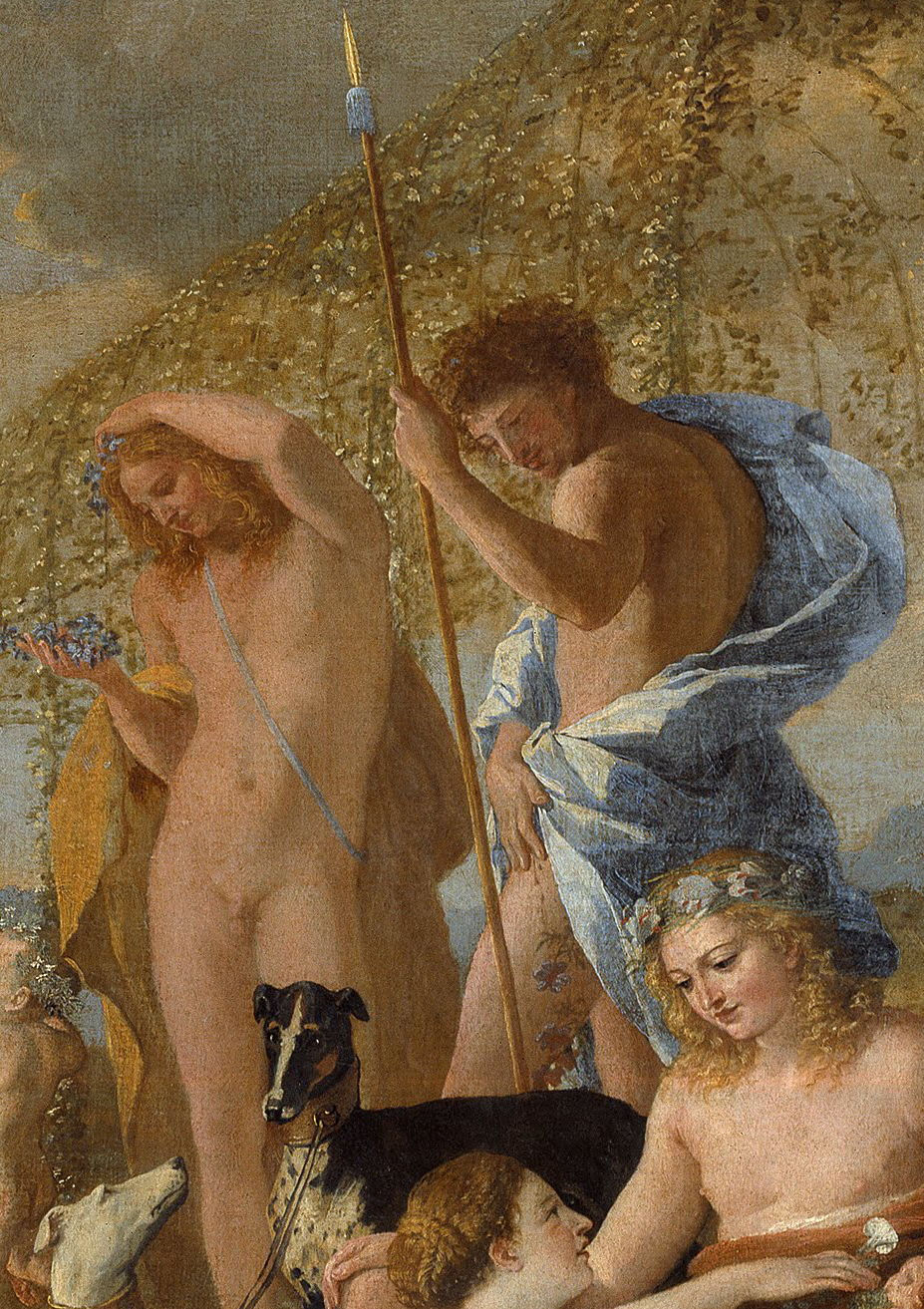Nicholas Poussin 'The Empire of Flora'
- dandelion

- Oct 14, 2021
- 4 min read
Updated: Oct 15, 2021
A landmark exhibition of works by Nicolas Poussin (1594–1665) – the first ever to focus on his pictures of dancers and revelers – opened at the National Gallery this month. It is a celebration of the movement and fluidity in Poussin's paintings that brings to life the classical world of Gods and mortals. I can't help but be drawn towards any picture of Flora because it's my daughter's name! This – and because it is a spectacular painting – one of the most outstanding works of seventeenth century French painting – crammed full of mythical stories is my rationale for picking out this one painting – 'The Empire of Flora' – as a "Picture of the Week".
The painting is set in the garden of the flower goddess – filled with dancing putti and a series of well-known characters.
From left to right:
PRIAPUS

Poussin has opted for a touch of decorum and the God of gardens and fertility (usually seen with an oversized and erect phallus) is represented by a herm (a sculpture with a head and sometimes – as here – a torso above a squared lower section on which male genitals may be carved). He has also wreathed his phallus in greenery!
AJAX

After he lost a contest with Ulysses/Odysseus over the arms of Achilles, Ajax fell on his sword deliberately (a phrase which we now often use often to mean self-effacing capitulation). In Ovid’s account when Ajax died he metamorphosed into the purple hyacinth flower. However, Poussin places a white carnation under him, which will be coloured by his spilled blood, as the hyacinth is accounted for elsewhere (see below: Hyacinthus and Adonis).
NARCISSUS AND ECHO

Often shown in paintings, Narcissus (left) is captivated by his own reflection in the water, while Echo gazes longingly at him. This classical myth is known from Ovid’s Metamorphoses, Book III, and is the union of two conjoined narratives.
In the first, Echo is a loquacious singing nymph who annoys Zeus’s wife Hera by tricking her into believing that her husband was around. Hera puts Echo under a curse, in which Echo is only able to repeat the last words spoken, and is unable to say anything else. Echo then falls in love with Narcissus; when her presence is revealed to Narcissus, he rejects her. Aphrodite then makes Echo disappear, so that only her echoing voice remains.
In the second story, Narcissus becomes tired of the heat when hunting, pauses by a spring, and drinks from it. While drinking, he falls in love with his own reflection in the water. He wastes away with this self-love, his body being replaced by the narcissus flower, which Poussin shows already growing by his knees.
CLYTIE

Clytie was a mortal who fell in love with Apollo, and because the god would not return her love, she pined away and was metamorphosed into the heliotrope flower (sunflower). She is shown staring longingly at Apollo’s heavenly sun chariot, dressed in the muted yellow of the sunflower, and behind her is a large basket of heliotrope flowers.
APOLLO'S SUN CHARIOT

The subject of Clytie’s unrequited love (Apollo) is shown driving the chariot of the sun across the sky, with a band containing the signs of the zodiac.
FLORA

We have looked at Flora's origins before when we looked at Botticelli's masterpiece Primevera (Spring) as our 'Picture of the Week' (see here to remind yourself). In short, Zephyrus, the god of the west wind, raped and then made a bride of the nymph Chloris, who then metamorphosed into Flora.
HYACINTHUS AND ADONIS

The mortal Hyacinthus also fell in love with Apollo, who returned his love. But Zephyrus, god of the west wind, was jealous. When Apollo was throwing a discus with Hyacinthus, Zephyrus brought the wind round so that the discus struck Hyacinthus in the head and killed him. He was then metamorphosed into the hyacinth flower, a bunch of which he holds in his right hand (shown here rather than for Ajax).
To the right is Adonis, accompanied by two hunting dogs. He was loved by Venus, but was wounded in the thigh by a wild boar that he was hunting, and died. Venus was heartbroken, and metamorphosed his blood into the anemone flower. Shown holding his hunting spear in his left hand, his right hand is spread over the wound inflicted by the boar, from where a string of anemone flowers springs.
SMILAX AND CROCUS

Smilax sprawls from the left onto the thigh of his love Crocus, seated at the right. Both were punished for their unfulfilled passion for one another, and metamorphosed into flowers – the saffron in Crocus’s left hand, and the rough bindweed (a flowering vine, Smilax aspera) by the left foot of Crocus.
CUPID

The putto at the bottom right of the painting is resting on a quiver, indicating that he is no mere generic putto, but probably Cupid himself.
Art historians have debated how this collection of mythical narratives are brought together and can be interpreted. There is no definitive answer, but most obviously there are three common themes of the season of spring, flowers and gardens and metamorphoses. Visit this spectacular painting at the National Gallery and see the narratives brought to life.
Poussin and the Dance
The National Gallery
until 2 January 2022
Book tickets nationalgallery.org.uk
Anya Waddington 14th October 2021





Comments